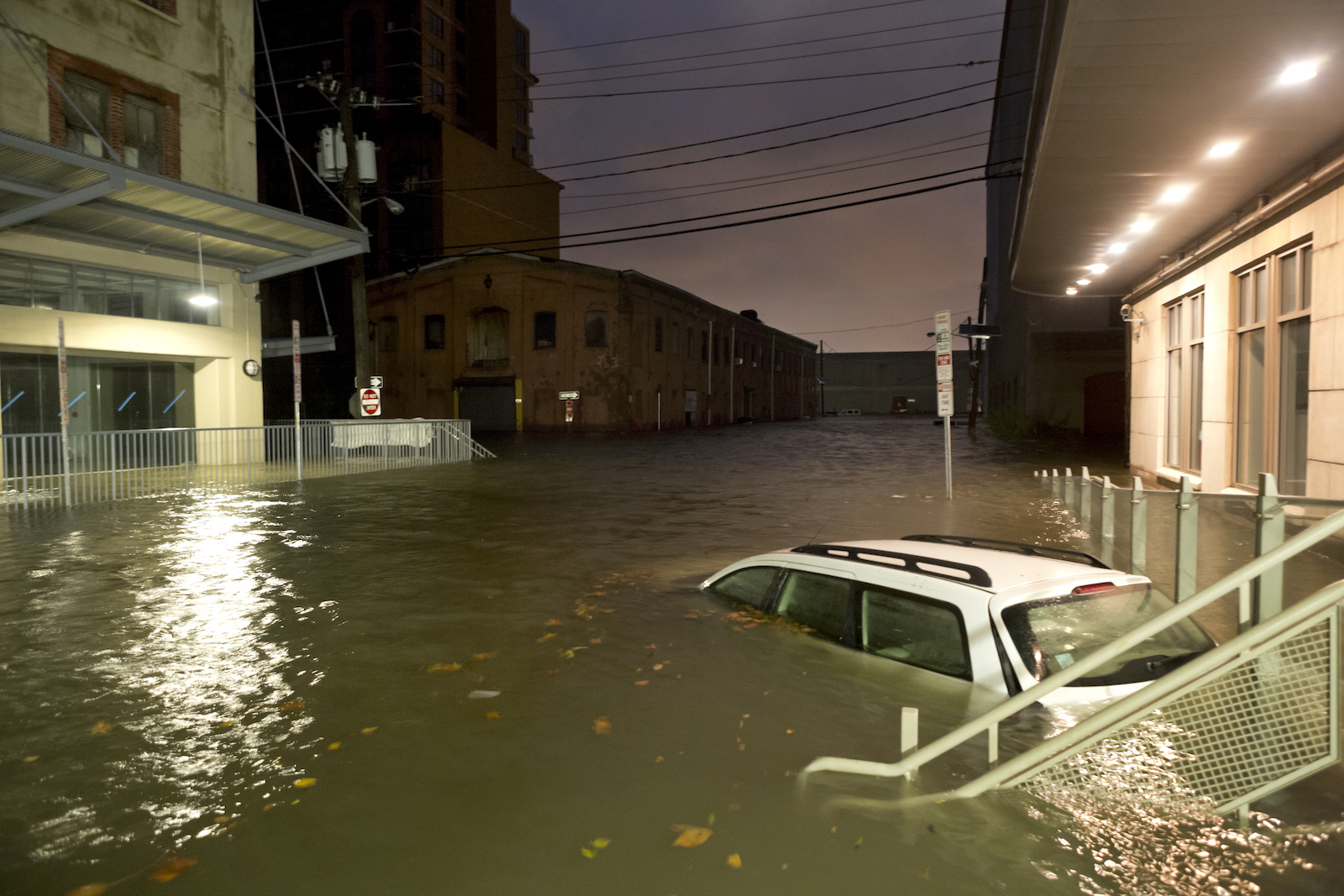This story was originally published by the Guardian and is reproduced here as part of the Climate Desk collaboration.
With towns and cities across the United States increasingly deluged by ferocious storms and rising sea levels, a group of disaster survivors has pleaded with the federal government to overhaul a flood insurance system they say is ill-equipped for an era of climate crisis.
A petition of nearly 300 people who have dealt with floods, and their advocates, is set to be sent to the Federal Emergency Management Agency, or FEMA, to call for a drastic overhaul of the government-run flood insurance system that underwrites most flood policies in the U.S.
“We’ve lived without electricity, running water, and secure shelter,” reads the petition, organized by Anthropocene Alliance, an environmental nonprofit. “We’ve heard our children cry from the absence of friends, school, and safety. And we’ve confronted homelessness, illness, and mind-numbing red tape from insurance companies and government agencies.”
The survivors are calling for a ban on “irresponsible” housing development in flood-prone areas, new rules that would provide buyers with the present and future flood risks of a property before purchasing it and a greater focus on relocating communities and elevating properties away from floodwater rather than simply funding rebuilding flooded homes in the same place as before.
“To continue to build in vulnerable places does not make sense and needs to come to a halt,” said Stephen Eisenman, director of strategy at Anthropocene Alliance. “A lot of people are suckered into buying in these places because there’s no federal disclosure laws. This is turning into a crisis, especially for poorer people… We are beginning to see the start of a great American flood migration and that exodus is only going to accelerate in the next decade. To keep building in these areas is just crazy.”
A particular controversy is a process called “fill and build” where developers heap soil upon flood prone areas, elevating them slightly before building housing upon the compacted dirt. Critics say this simply diverts floodwater to neighbors and is a short-term fix to a chronic problem.
“We have developers building on wetland areas that can’t hold water anymore so it just flows off onto us,” said Amber Bismack, a petition signatory who lives in Livingston County, Michigan, which is a part of Detroit’s metropolitan area. Bismack moved to the area, close to a tributary of the Huron river, seven years ago and has seen her neighborhood flood on 15 occasions in this time.
The flooding has become so bad at times that Bismack has had to don waders to carry her children home through floodwater. The family had to temporarily move out of the house, too, when the drains stopped working because of the flooding. She said that the worsening floods are taking its toll on the local community.
“I can’t tell you how much depression we are seeing in the community because it just floods over and over again, we’ve seen a real decline in people’s mental health,” said Bismack, who is part of a community group that is calling for Congress to mandate flood risk disclosure to all potential homebuyers.
“I know someone who thought their flood insurance would be $1,000 a year but couldn’t find out the true risk until they bought and it was deemed by FEMA to be high risk with a premium of $13,000 a year, which is unlivable,” she said. “People are just stuck.”
The national flood insurance scheme was launched in 1968 and has become the default for millions of Americans unable to get mortgages without flood insurance, which is routinely denied by private providers. The system has been driven into debt, however, with some homes repeatedly rebuilt in the same place only to be flooded again.
FEMA deems homes at risk if they are in something called the 100-year flood plain, which means they have a 1 percent risk each year of getting a foot of water in flooding. This system does not account, however, for the proximity to water or the unfolding climate crisis, meaning that many of the flood maps are inaccurate and premiums do not reflect the actual risk. “FEMA is a joke, it doesn’t update its flood maps,” said Jackie Jones, a resident of Reidsville, Georgia, a town that often floods following heavy rainfall. “I wouldn’t have bought this house if I knew I’d get so much water but based on FEMA’s maps, there’s no flooding here. They need to step up and take some control.”
In October, FEMA unveiled a new system, called Risk Rating 2.0, that aims to address a situation where nearly half of the flood claims received by FEMA are from people outside zones where insurance is required. Around three-quarters of the 4.9 million federal insurance policyholders will pay more for their premiums. “We’ve learned that the old way of looking at risk had lots of gaps, which understated a property’s flood risk and communicated a false sense of security,” said David Maurstad, a senior executive of the national flood insurance program, told AP.
The elevated premiums have been opposed by some members of Congress, who argue it will hurt people who require affordable housing, but Eisenman said the reforms do not go far enough as they do not actually curb new building on risky floodplains. “Much more profound changes are needed,” he said.
Instances of ‘nuisance’ flooding, where high tides exacerbated by sea level rise cause streets and homes to fill with water, have increased dramatically along U.S. coastlines in recent years and more powerful storms, fueled by a heating atmosphere, are bringing heavier bursts of rainfall to parts of the country. Rising sea levels alone could force around 13 million Americans to relocate by the end of the century, research has found.
For many people, however, moving is not an option, due to financial constraints or ties to home. “There is a great concern and fear because everything is at risk, even people’s lives,” said Rebecca Jim, who lives in the Cherokee nation in Oklahoma. Miami, a city in the area, has been regularly flooded by water that washes toxins from a nearby mining site onto homes, schools, and businesses.
“It’s foolish and criminal that more building is allowed on floodplains. But much of what is flooded here is tribal land and people here aren’t moving from that.”



